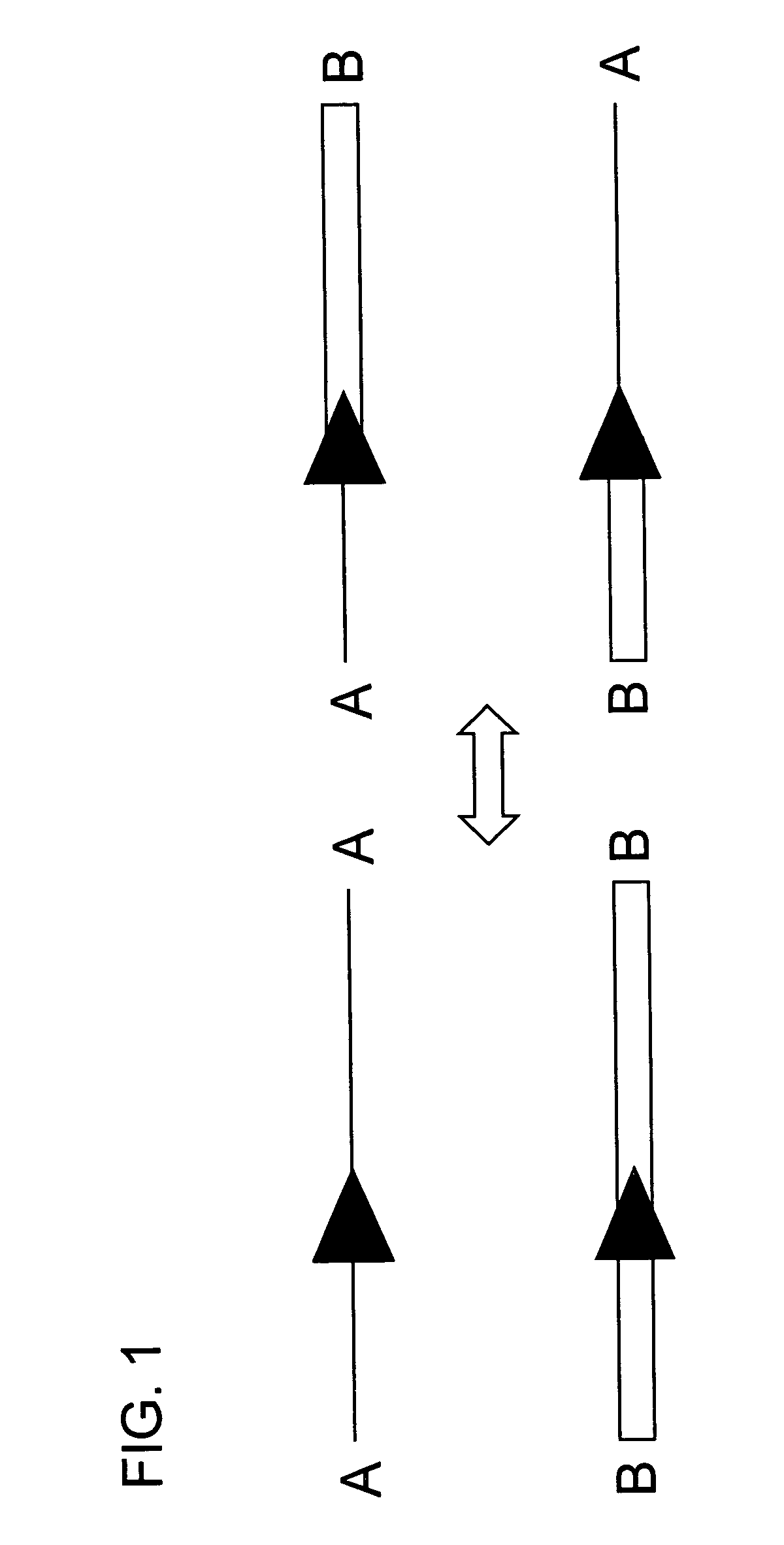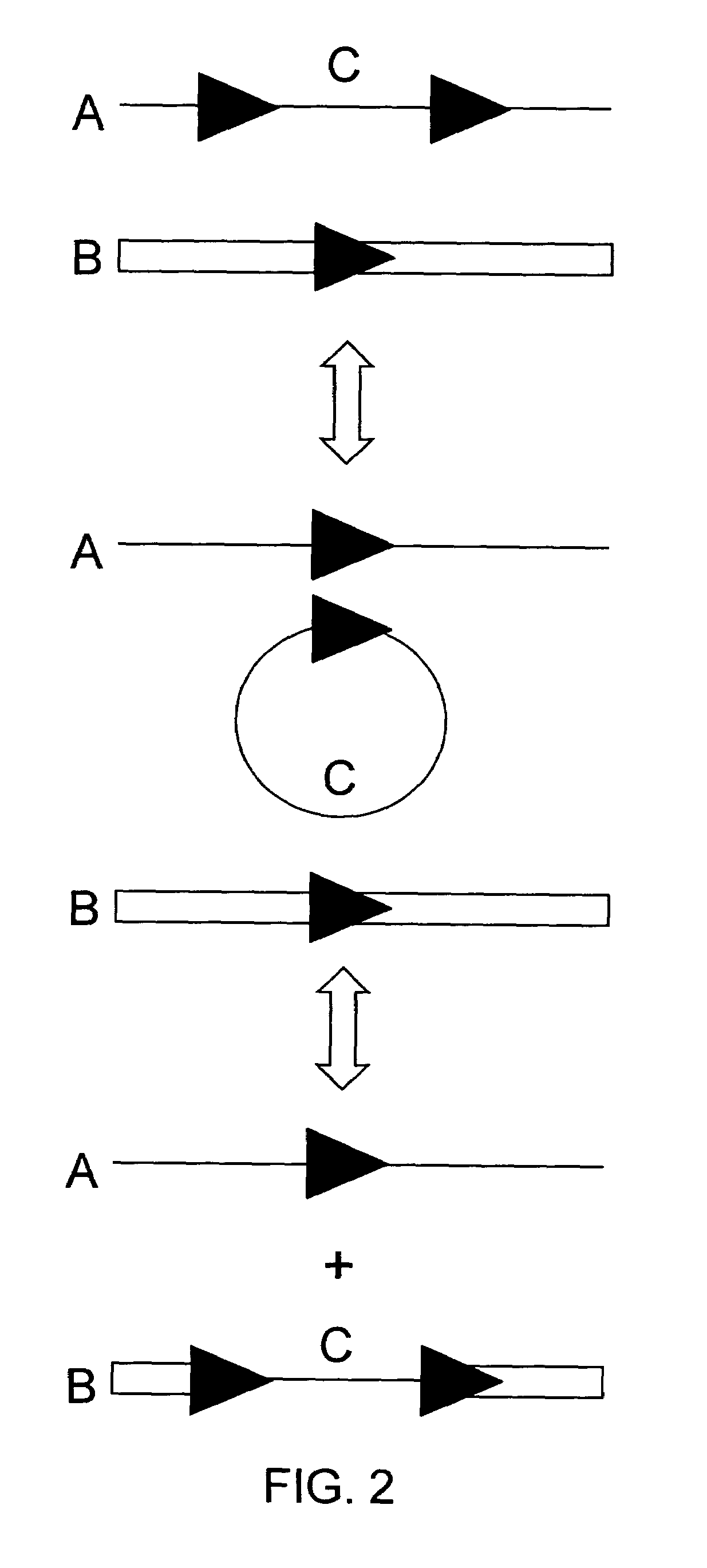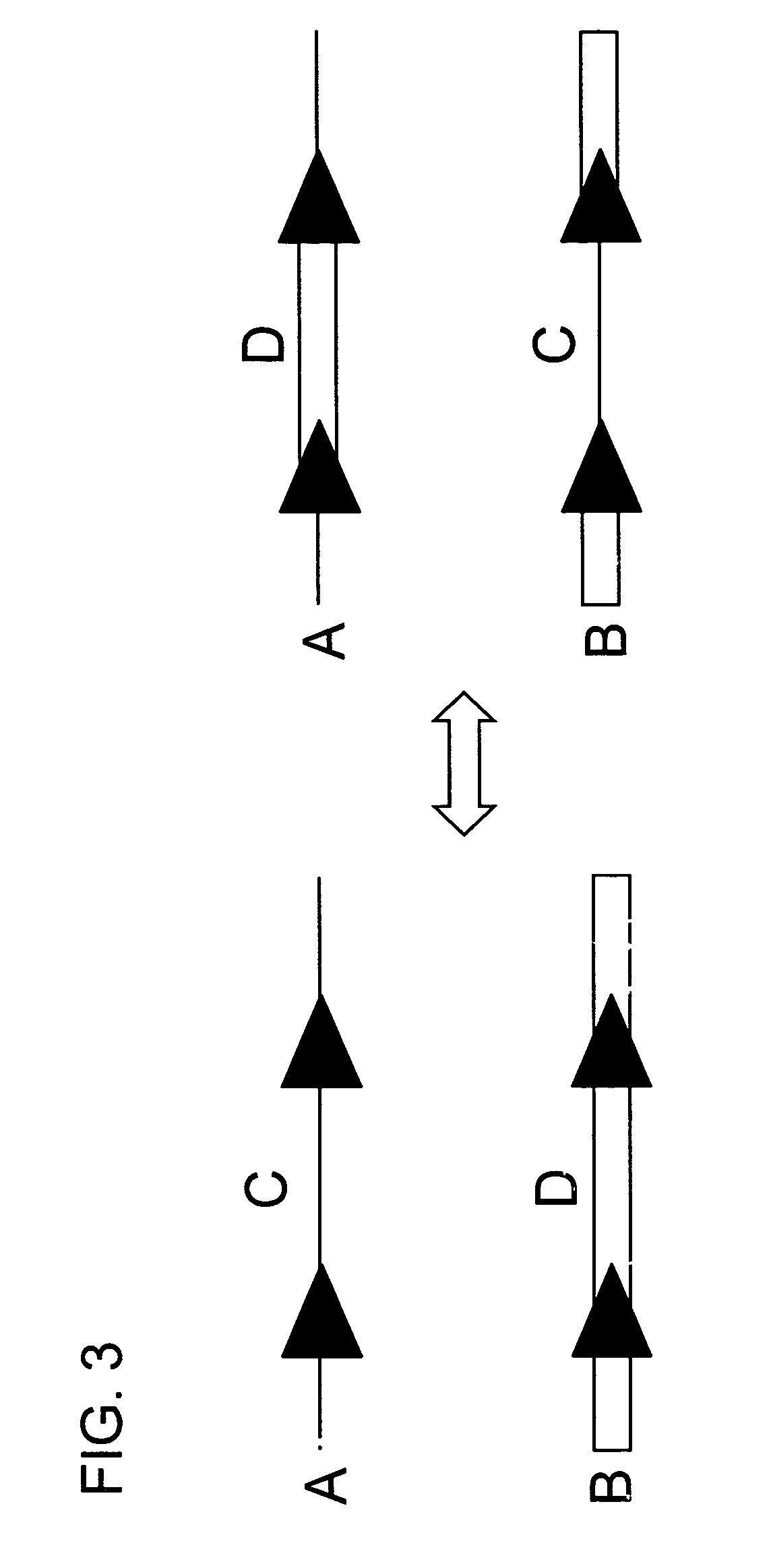High efficiency gene targeting in plants
- Summary
- Abstract
- Description
- Claims
- Application Information
AI Technical Summary
Benefits of technology
Problems solved by technology
Method used
Image
Examples
example 1
Initial Findings
[0084]In this experiment tobacco plant cell lines were transgenic for (a) HSP FLP (the FLP recombinase gene under control of the Gmhsp17.6L promoter), (b) a chromosomal “tag” genetic sequence that contained an FRT (Flp Recombinase Target) site situated between a promoter and a coding sequence plus terminator with the FRT recombination target site situated 5′ of the coding sequence (in the experiment described the Tag coding sequence was a GUS reporter gene); and (c) an incoming DNA sequence comprising a second (different) coding sequence plus terminator flanked by FRT recombination target sites in direct repeat orientation; this incoming DNA was the “incoming targeting gene” and for the experiment described, the incoming targeting gene was a luciferase (luc) gene. The starting point was cell lines into which elements (a) and (b) had been stably transformed via Agrobacterium. The incoming DNA (c) was then introduced and the following surprising results were found.
[008...
example 2
Synthesis of FRT Sites
[0089]Flp Recombinase Target (FRT) sites were synthesized as complementary oligonucleotides and annealed. Two FRT sites were constructed differing only in the restriction endonuclease sites added at either end. The forward (5′-3′) oligonucleotide sequence for the 5′ FRT was 5′-FRT: XhoI-5′-FRT-SalI, as follows: CGACTCTCGAGGAAGTTCCTATTCCGAAGTTCCTATTCTCTAG (SEQ ID NO:1);
[0090]The antisense oligonucleotide for the 5′ FRT sequence for the 5′-FRT: XhoI-5′-FRT-SalI was: CAGATGTCGACGAAGTTCCTATACTTTCTAGAGAATAGGAAC (SEQ ID NO:2).
[0091]The forward (5′-3′) oligonucleotide sequence for the 3′ FRT was 3′-FRT: BamHI-3′-FRT-KpnI, as follows: CGACTGGATCCGAAGTTCCTATTCCGAAGTTCCTATTCTCTAG (SEQ ID NO:3).
[0092]The antisense oligonucleotide sequence for the 3′ FRT was 3′-FRT: BamHI-3′-FRT-KpnI, as follows: CAGAGGTACCGAAGTTCCTATACTTTCTAGAGAATAGGAAC (SEQ ID NO:4).
[0093]Each set of oligonucleotides was designed to be complimentary one to the other such that upon annealing a double-stra...
example 3
Cloning the FRT Sites
[0095]The 5′FRT: The FRTs were then directionally cloned using a stepwise procedure which took advantage of the fact that the FRT sequence had a unique internal XbaI site; the 5′FRT duplex was cut with XhoI+XbaI and ligated into the vector pSL301 (InVitrogen) cut with the same enzymes. The resulting product was cut with XbaI+SalI and the XbaI+SalI fragment of the 5′FRT duplex ligated in, producing pSL301-5′FRT.
[0096]The 3′FRT: 3′FRT was cloned by cutting the 3′ FRT duplex with BamHI+XbaI and inserting it into BamHI / XbaI cut pSL301. The ligation product from this was then cut with XbaI+KpnI and the XbaI+KpnI fragment from 3′FRT inserted. The 3′FRT BamHI / KpnI fragment was gel isolated and inserted into BamHI / KpnI cut pSL301-5′FRT, producing pSL301-5′FRT-multiple cloning site-3′FRT.
[0097]The Mannopine Synthase Promoter (mas)—A unidirectional mas promoter was constructed using PCR amplification of pAGM139 (Gerry Hall, Mycogen) as template and the sense strand oligo:...
PUM
| Property | Measurement | Unit |
|---|---|---|
| Time | aaaaa | aaaaa |
| Time | aaaaa | aaaaa |
| Time | aaaaa | aaaaa |
Abstract
Description
Claims
Application Information
 Login to View More
Login to View More - R&D
- Intellectual Property
- Life Sciences
- Materials
- Tech Scout
- Unparalleled Data Quality
- Higher Quality Content
- 60% Fewer Hallucinations
Browse by: Latest US Patents, China's latest patents, Technical Efficacy Thesaurus, Application Domain, Technology Topic, Popular Technical Reports.
© 2025 PatSnap. All rights reserved.Legal|Privacy policy|Modern Slavery Act Transparency Statement|Sitemap|About US| Contact US: help@patsnap.com



